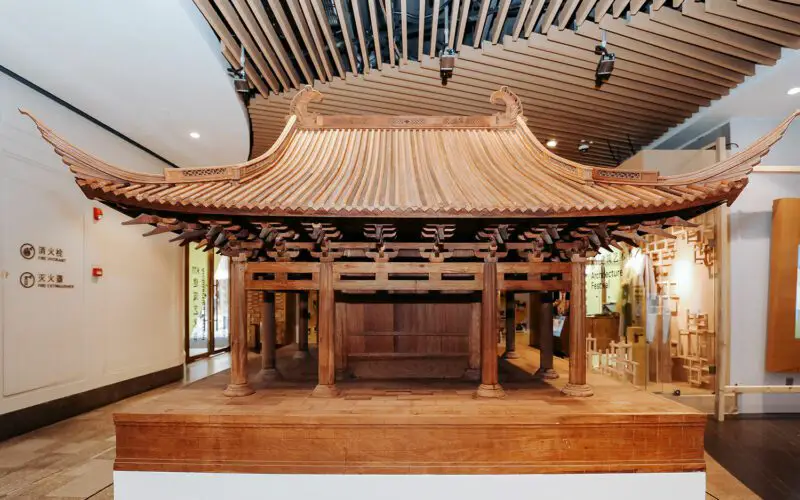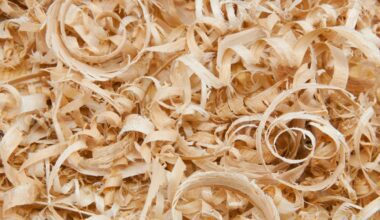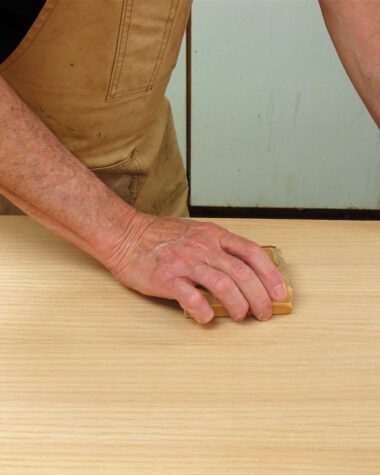China is without a doubt one of the most creative countries in the world. The country is known for its cutting-edge inventions that are completely out of the box, including its technology and culture. Thus, it is time to shed light on their culture and contributions, especially in their old and golden time. Specifically, we will dive into the richness of their culture in terms of wood. So, without a doubt, let’s get started.
Did You Know?
Men and women were committed to doing distinct tasks during the ancient Chinese period. For instance, men who have received special training are tasked to draw and engrave Chinese characters. Their task also necessitated a thorough understanding of ancient Chinese grammar. On the other hand, women would cut and bind paper, continuing until the printed genealogies were complete.
After the type page is taken apart, the movable characters can be employed repeatedly. Craftspeople deliver wooden character sets and printing supplies to ancestral halls in nearby communities throughout the year. There, the clan genealogy is manually compiled and printed. The printers finish the genealogy, which is then ceremoniously placed into a sealed box for preservation. Wooden movable-type printing methods are passed down via families orally and by rote.
The extensive training needed, the meager revenue produced, the widespread use of computer printing technology and the waning interest in compiling ancestries have all led to a sharp decline in the number of craftspeople. There are now only eleven people over the age of 50 who have mastered all of the skills. If not preserved, this ancient ritual will soon cease to exist.
Traditional Chinese Wooden Structures
Did you know that Chinese architecture is among the three greatest architectural systems on the planet? Generations after generation, Chinese people have developed and applied a construction style that can’t be seen anywhere else in the world. But what sets Chinese architectural craftsmanship apart, making it stand out from the rest of the global architectural systems?
To begin with, there are two key ways traditional Chinese architecture differs from other regions of the world: the construction material and the unique wooden components.
Ancient Chinese: Wooden Construction Material
Wooden Chinese frameworks emerged during the early Neolithic period. Thus, mortise and tenon joinery was employed in the buildings as early as 7,000 years ago. Several of these historical constructions were discovered in the Hemudu site in Zhejiang.
Some evidence proves that wooden constructions in ancient China existed in the second millennium BCE. This is rooted in the discovery of some construction buildings that date back to the Xia Dynasty that reigned the country between 2070 – 1600 BCE. According to the archeological records, these earliest buildings were made out of wood.
Wood was the most favored and widely used construction material by the ancient Chinese up to the 19th century. In contrast, most of the Ancient buildings constructed in the same period of Ancient Chinese were made of stone.
Ancient Chinese: Wooden Components
The first architectural representations of traditional Chinese house construction date back to the first century CE. These designs were essential in ensuring that architectural methods could be passed down freely from generation to generation. However, the early architectural drawings also marked the beginning of the national standardization of conventional building forms and associated practices.
The three essential components present in the construction of traditional Chinese wooden buildings are:
- the foundation platform;
- the timber frames; and
- the roof and ceiling
These three wooden components have an interesting commonality among the architectural standards manuals and treatises written during various eras of ancient Chinese history. These writings include:
- “Mujing” or “Timberwork Manual”
It is a collection of early treatises on traditional Chinese timber-framed buildings written by Yu Hao. He is a skilled carpenter who lived around AD 956–988
- “Yingzao Fashi” or “State Building Standards”
This writing consists of the defined architectural rules by Li Jie (1065–1110). He is a well-known Song Dynasty author.
- “Qing Gongbu Gongcheng Zuofa” or “Qing Architecture Standards”
In 1734, traditional Chinese architectural standards were further compiled into a more detailed and well-systematized list. Qing Gongbu Gongcheng Zuofa is a 74-volume and 2,768-page official architectural guideline, which translates into “Qing Architecture Standards.” This systematized list was compiled during the reign of the Qing Dynasty (1644-1911).
Significance of Compass Points Alignment
Compared to modern standards, the physical foundation of traditional Chinese buildings built in the past could have been stronger because they only used Hangtu or rammed earth. The soil was pounded into layers using only natural resources such as lime, chalk, gravel, and the soil itself. Various construction methods used these elements in foundations, walls, and floors.
Interestingly, the foundations would always be aligned with the compass’s cardinal directions. There is insufficient evidence to conclusively say that this particular alignment increased the strength of the buildings, but it is unquestionably tied to watching the balance of the structures according to certain cosmological views.
The importance of compass point alignment is closely related to the Yin and Yang dualities, which have diverse interpretations, including Top and Bottom, Knowledge and Ignorance, and Good and Evil. The interpretation of the vital and highly regarded harmony and balance in every aspect of life—what Confucius would later call “moderation”—is where these dualism principles shine.
Chinese Contributions That Inspired UNESCO
Ancient China earned world recognition for the Four Great Inventions, namely the compass, gunpowder, printing, and papermaking. Truly, the country provides rich culture and wooden works that UNESCO finds worth valuing and preserving. Here are two most common wooden works from Ancient China included in the Representative List of the Intangible Cultural Heritage of Humanity.
Timber-framed Structures
Traditional Chinese architecture, particularly Chinese craftsmanship for timber-framed structures, was inscribed on the Representative List of the Intangible Cultural Heritage of Humanity in 2009. Under UNESCO’s aegis, a new focus was put on the incredible ways Chinese craftsmen have mastered architecture, dating back to the impressive 7000+ years ago.
Wooden Movable-type Printing
Inscribed on the Intangible Cultural Heritage of Humanity list in 2010, Chinese wooden movable-type printing serves as an invisible bridge connecting generations of families to their roots.
The earliest movable-type printing method was created between 1041 and 1048 AD, notably during the rule of the Song dynasty. In contrast, Johannes Gutenberg, the printing press inventor in Europe, introduced moveable type mechanical printing to the continent in 1450. This corresponds to four centuries after the invention of the conventional Chinese movable-type printing technology.
Each phase of the procedure, which is entirely done by hand, is connected to paying homage to the ancestors because Chinese wooden movable-type printing was traditionally used for compiling a family’s or, more specifically, an entire clan’s genealogy.
Watertight-bulkhead Technology
As already mentioned, Four major Chinese inventions have permanently impacted human history. Even if the general public somehow overlooks it, the watertight-bulkhead technology of Chinese junks might be hailed as the fifth Great Chinese invention.
The watertight-bulkhead technology of Chinese junks refers to the traditional skills of making wooden vessels. This particular type of vessel is attributed to the coastal areas of Fujian Province in South China. Fujian province is located on the southeast coast of mainland China, opposite the island of Taiwan. It is usually traditionally made from various wood types, such as fir, pine, and camphor.
Chinese junks’ watertight-bulkhead technology has saved thousands of sailors’ lives throughout history. As a result, UNESCO designated watertight-bulkhead junks as a distinctively Chinese technology and listed it on the Representative List of the Intangible Cultural Heritage of Humanity in 2010.
Furthermore, traditional knowledge is rapidly being faced with oblivion as a result of different elements influencing modern-day China and is therefore labeled as being in “Need of Urgent Safeguarding.”
Final Thoughts
For thousands of years, people worldwide have used wood as the number one material in literally any aspect of life. Amazingly, wood communicates the mysterious ways many cultures, like China, use it to advance and provide humanity with the necessary knowledge and skills.
No matter how much ahead of time a country like modern-day China can grow and develop, real progress can only be made by staying rooted in the traditions. It is traditions that make up the consciousness of a nation, and they keep people close together not only in times of glory but also in times of despair.








